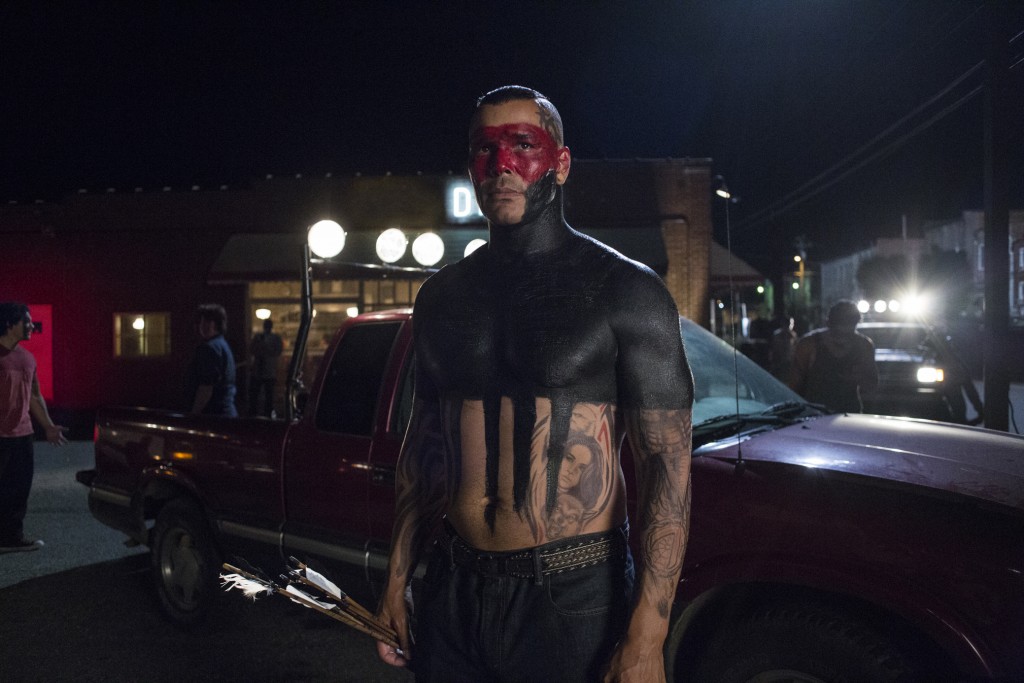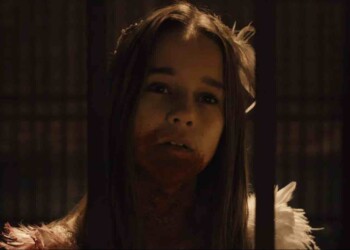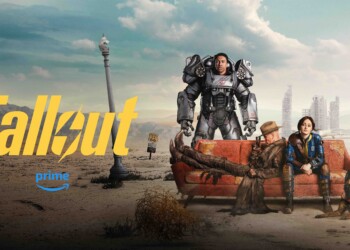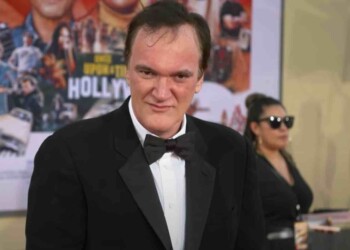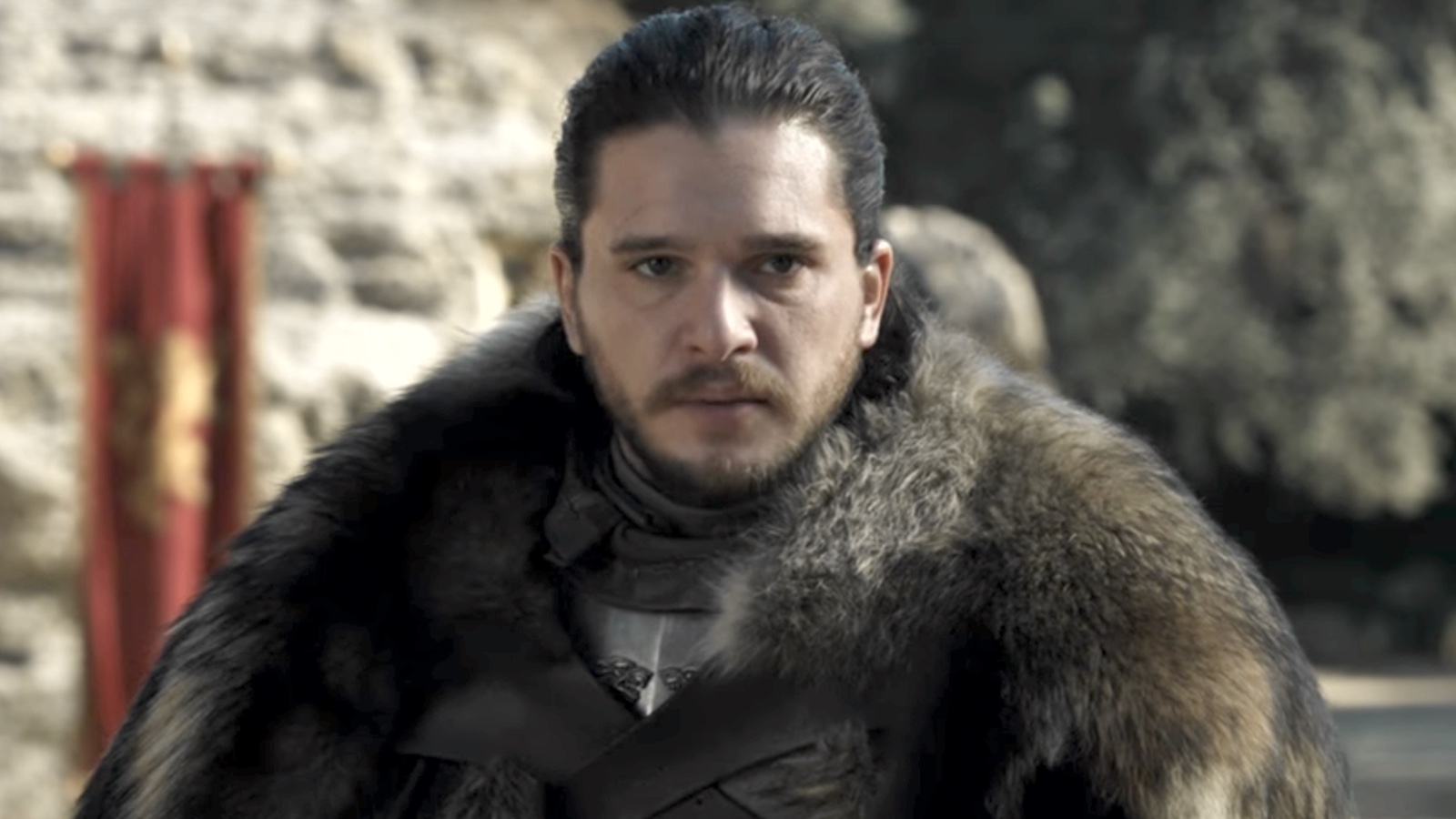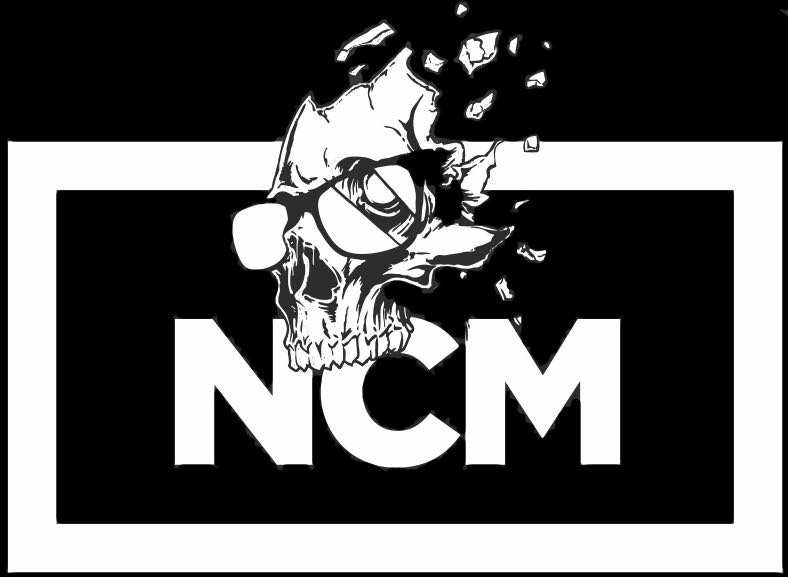Banshee co-creator Jonathan Tropper looks back on four seasons with the hit show on Cinemax in an exclusive interview….
By Michael Stets — Staff Writer
Last Friday night marked the final episode of Banshee, bringing its successful four-year run on Cinemax as the network’s highest-rated show to an end. A conclusion that may end up leaving as big of a void on Friday nights as the indelible impression it left on its loyal and faithful viewers since 2013.
Hardcore fans of the show–otherwise known as Fanshees–were sparred from heartache as the show’s popular anti-hero, Lucas Hood, remained whole while he sped out of the Pennsylvania town on Route 39 in search of a new life.
However, that wasn’t the original plan for the man who assumed the identity of a dead sheriff according to Banshee Co-Creator and Executive Producer, Jonathan Tropper. There was a much different plan for Lucas Hood, but that all went away as the show matured.
“For the first year or so of the show I always felt like the right ending was that Lucas dies and saves his family,” Tropper told NerdcoreMovement.com recently. “He would ultimately sacrifice himself because he came into the show so self serving and so selfish and just looking to get what was his, that I thought it was a great arc for him to figure out who he was by sacrificing himself. But over time I realized as we continued to write the show and as the character continued to develop both through Ant’s [Antony Star] work and through our discoveries in the writer’s room, what we realized is that Lucas Hood has never actually lived.
“He’s never actually understood who he is. He doesn’t really know who he is and I thought a more fitting ending to this character was to have him be almost reborn and let Banshee serve as the womb and now he’s being cast out into the world to figure out who he is. In the end I thought that was more satisfying. I knew it would be more satisfying for the fans to believe that there are more adventures out there for him and we were never–at that point–going to kill him for the shock value of killing him.”
Tropper, 46, said he “always knew the show–even in success–was always going to have a shelf life.” With the intended plan of calling it a day after a fifth season. But during writing sessions prior to Season 4 it became apparent that it was best to end things one season early, which was announced prior to production last July.
“Whenever we started thinking about what to do to prolong it it just didn’t feel organic,” said Tropper, before revealing some of the ideas that were bandied about to stretch the show through a fifth season. “We went don’t everything from leaving Banshee and just following Lucas and Job back to New York, to Lucas leaving and carrying the Banshee story on without him and him coming back sometime toward the end. Every possibility you could think of we thought of and just–none of them felt like they were really going to be our show.”
Changing locations or going on without a central character are both usually tell-tale signs that a show is trying desperately to stay relevant, which wasn’t going to work for Tropper, fellow Executive Producer and director Greg Yaitanes or anyone else involved with the creative process.
“The show has always been about a guy, a criminal, who is posing as a sheriff,” Tropper said. “At the end of Season 3 we took him out of the sheriff’s office and I just couldn’t see trying to create a show around Lucas Hood where he’s not the Sheriff.”
No producer or director wants to be lumped into the dreaded “Jump the Shark” category when a show has overstayed its welcome, and although it was sad to say goodbye to a show at the pinnacle of its popularity, Tropper was always of the mind that Banshee should go out on top instead of limping to the finish line after tarnishing its reputation.
“Yeah, I am actually very emotional about it,” he admitted. “I’d have loved to have seen it keep going. Even if it kept going without me. I would’ve loved to see it keep going in general. I think that town had more stories to tell, but you know, the TV landscape had changed a bit and I would always rather bow out gracefully than stick around past our expiration date.”
You’d be inclined to think bowing out on top comes with a sense of pride, kind of like an NFL player retiring after winning a Super Bowl. But the man who helped spawn the idea of Lucas Hood, which resulted in one of the most unique cable television series to ever see the light of day, said he was more worrisome he’d alienate the loyal Fanshees if the show continued on.
“I don’t know if it’s really pride, it’s more just fear of doing the other thing,” Tropper divulged. “I don’t want to be around when our fans turn on us you know? We have a very vocal and very rabid fan base. We’ve pleased them for four seasons and the neurotic writer in me is always worried that we are not going to be able to keep it up. In this case I just felt the story was coming to an end and everything we did to keep it going would kind of feel a little contrived and people would see through that.”
So we don’t get to see Lucas Hood resurface in New York or another outside destination in Season 5, which is likely for the best. We saw him ride out of town the same way he came in, but he did not end up with his long-lost love he’d been searching for in Season 1 after being leased from a 15-year prison sentence.
One could argue it would’ve been banal to have Hood and Carrie end up together, but Tropper said “it’s not even that it’s a cliche” as much as the two characters having to atone for all of their sins after four seasons and not getting rewarded.
“We always said there has to be consequences for what these two did,” Tropper explained. “After four seasons you grow to love them and you forget they’ve done some really bad things. For Lucas and Carrie to end up together they are basically building their happiness on the foundation of the bodies of Gordon and Siobhan and that just doesn’t sit right with me. It just felt like they had done too much damage to get to ride off into the sunset together.”
Hood didn’t end up in a fight to the death with arch nemesis Proctor either, which seemed a plausible outcome. Instead he came to blows with the Amish kingpin’s No.2, Clay Burton, in his final battle of the series. Which, according to Tropper, was the greater victory.
“I think Lucas sort of delivering the broken, dying Burton to Proctor’s lap is a more effective way of winning that four-season long battle than Lucas killing Proctor himself,” Tropper said, “because Lucas left Proctor alive and in the worst pain in his life. And also there is also a little bit of respect between these two. When Lucas leaves Proctor he’s beaten him, but he does have some element of respect for him. He doesn’t need to kill Proctor. He needs to just let Proctor know that he’s done.”
Banshee is undoubtedly going to cast a long shadow for any show attempting to do something even remotely similar to what Tropper, Schickler, and Yaitanes brought to the screen. They succeeded in straddling the fence between the gratuitous sex and violence of a B-movie and a serious, character-driven drama with talented actors and high-level production. The rubber met the road to create something that cable television had never seen before.
“That was always our goal from the beginning was we wanted to sort of … we certainly wanted to give a nod to the pulp and B-movies and the straight-to-video movies of the 80s and 90s that I loved so much, but at the same time we wanted to tell real stories about characters you could really invest in,” said Tropper, who wrote the screenplay for the film This is Where I Leave You from his novel with the same name. “What we wanted to do was to create sort of the atmosphere of those straight-to-video videos, but do it with first-rate production values and quality acting, quality writing. We treated it like a very serious drama.”
“I think the trick for us was that we always took this show very seriously and at the same time we didn’t take ourselves too seriously,” he continued. “We took our characters very seriously, but we didn’t take ourselves too seriously. We knew we weren’t doing ‘Downtown Abbey,’ we wanted to do something that was always entertaining, always fun, never took itself too seriously and at the same time had a real production value and quality to it. I think we were actually very successful on that front.”
Tropper, who learned how to produce film and TV by working on Banshee, got behind the lens for the first time in four seasons to direct Episode 6: “Only One Way A Dogfight Ends.” He explained why it took so long to get into the director’s chair.
“I really wanted to do it and I think it was just timing and work,” said Tropper. “There is a lot involved in getting the show up on its feet. To direct you have to be able to break away from that and just focus on your episode and I think in the first few years I was just learning how it all worked and then after that I was running it and it was only once I had Adam [Targum] on board and felt confident that I could sort of hand stuff off to him that I could kind of pull back and focus on directing. It would’ve been nice if I felt like I could’ve done it sooner, but the season goes really quickly when you are producing it.”
While he doesn’t have one specific favorite moment from the series, Tropper mentioned two episodes: one from Season 2 and another from Season 3 as moments that truly stood out to him.
“I think when we did “The Truth About Unicorns” [Season 2 Episode 5] the fact that the networked trusted us to do that episode, and that the episode came out the way it did and got the response we hoped it would, that was a good moment for us,” Tropper recalled fondly. “It really felt that we had sort of earned the right as a show to take chances. I thought Season 3 was kind of the culmination or our prowess as an action show. The siege on the CADI where the entire episode [Season 3 Episode 5: “Tribal”] takes place where the Redbones have everyone under siege at the CADI. I thought that was actually a fantastically written and executed episode that was the entire show in an episode.”
Banshee was originally going to be an HBO show before Cinemax expressed interest in it. “The first season took a long time just because they weren’t sure what they were going to do for this show,” Tropper explained. So while the show was getting moved from one network to the other, more work had to be done he said. “We had to move the show over to Cinemax, which is owned by HBO and at the same time we had to rewrite the pilot as more of a Cinemax show and a show that would up the action quotient of it.”
The network continued to order more episodes and before the show was finally green lit, Tropper had the majority of the initial season written.
“We already had six episodes written and then we just wrote the last four during production,” Tropper said. “We never even had a writer’s room for that first season, but we had six episodes written before the show got picked up and then we only had to write four more during production.”
As the show progressed through each season, the Banshee Co-Creator said the creative process was an enjoyable one and no idea that was brought to the table–no matter how crazy or off the wall–was ever off limits or out of the question.
“The writer’s room was a lot of fun, and the truth is we didn’t have really long extended writer’s rooms,” he said, which is surprising considering the different story lines and interweaving narratives. “We didn’t really need them. At the end of every season by the time I started the writer’s room I always had a pretty good idea of the broad strokes of the season.
“I’d sit with Greg and then later on Adam and we would just kind of figured out where we wanted those seasons to go and then we hired writers to really break out all those episodes. We took a lot of pleasure in looking for writers with really bizarre scripts and scripts that had never seen the light of day that struck us as really imaginative or strange or somewhat unbalanced. We’d get those writers to show up in the room and see what came out of it. I think the writers really enjoyed being in a room where there was no bad suggestion. We would entertain every possibility.”
A lot of those ideas and scenarios including fight sequences and action scenes, that were brought to life by stunt coordinator, Marcus Young, who was indeed an important asset to the creative team and someone Tropper raved about.
“Marcus and his team they really take a crazy amount of pride in what they do,” said Tropper. “They don’t consider themselves just stunt men or stunt coordinators. They really consider themselves in a way as writers and directors too and they really try to tell stories through those fights. And at the same time they are really good at it. Marcus and his team they’ve been working together for a while and they are all really good at it and the actors get really excited because we really try to do as much actor action as possible. We use stunt doubles for the really dangerous stuff, but the actors really do those fights. They train for weeks, sometimes months before one of those scenes is up.”
Tropper also heaped a ton of praise on Greg Yaitanes, who along with being the Banshee show runner, created Banshee Origins, which was a series of webisodes that delved into the history of the characters on the show during time frames that didn’t play out during the show, but were pertinent to the various story lines and character arcs.
“Greg really built this show because we didn’t know anything about television when we got started,” Tropper admitted. “David Schickler and I when we created the show we never did TV before so we needed to bring someone in who knew how to build the show from the ground up and that was Greg. Greg came in and he had 20 years of experience under his belt and he really built the show.
“But in addition to building the show he was very conscious of the fact that the TV industry was really at a turning point and that the new technologies were changing everything: The streaming, the second screen, it was one of the first with Twitter, Greg really understood that the way to build your audience is to hit them on all the platforms. One of his ideas was let’s create a series of webisodes that tell more stories, tell the kind of stories we can’t tell on the show and give the deep-diving fans things to find.”
Oh, and before you get excited and think you learned Hood’s real name if you paused the screen to read the FBI file that Special Agent Veronica Dawson left on the hotel bed for him to find. John Smith is not his real name.
“There is actually a Banshee Origin where he gives that name when he gets arrested,” said Tropper, referring to the “Interrogation” webisode with Reg. E. Cathey as Detective Bonnor. “That’s not his real name. It’s a name he gives being a smart ass to the cop that is interrogated him. Not his real name.”
So no one will ever know Hood’s true identity. “I don’t know it,” he said.
Would there ever be a time or circumstance where Banshee could be revisited?
“I’d never say never, but the economics of television being what they are I don’t know how we would revisit Banshee,” said Tropper, assuring Fanshees not to get their hopes up. “It’s not like the set of Friends that is on the Warner Bros. lot. We shot on live locations that are no longer ours. I can’t imagine the TV version of pulling that all together. I suspect that barring some kind of miracle we put Banshee to bed.”
Before Banshee began its initial stages, Tropper said he always felt strongly that the show was going to be a success. “We were naïve, but we weren’t that worried. We really believed that we were doing something unique and different, and we also believed somehow that the audience would find it. Now having worked in TV for five years, I would be a lot more skeptical the second time around, but my naivete helped my confidence.”
And now Tropper will ride that wave of confidence and years of experience from Banshee, into his next project, which is a new Cinemax show called Warrior, that is based on concepts written by Bruce Lee. Tropper wrote the pilot and executive produce along with Justin Lin and Shannon Lee.
“It’s a show that takes place in 1870s Chinatown, San Francisco,” he said, giving a teaser of what to expect. “It’s about the Tong wars in Chinatown in that time period. The best way I can pitch is it’s kind of Gangs of New York in Chinatown in 1878.”
In addition to that, he will once again team up with Greg Yaitanes for another action show on Cinemax. “Greg and I have another show we’ve developed at Cinemax with a big actor that I am not supposed to talk about yet, but within the next week or two I think there will be an announcement,” he revealed. “It’s a really interesting, different and exciting, very action-driven show.”
With Banshee coming to an end after five years of what Tropper called a “labor of love,” it’s on to new characters and narratives for the accomplished author, and seasoned television writer and producer. However, he will always hold a special place for Lucas Hood and the gang.
“You never forget your first. I just remember watching Lucas Hood come into town and all these characters and ideas that I had in my head for so long showing up on screen and realizing that we had actually made the journey from imagination to the screen and I thought that’s a moment that you don’t really forget.”


